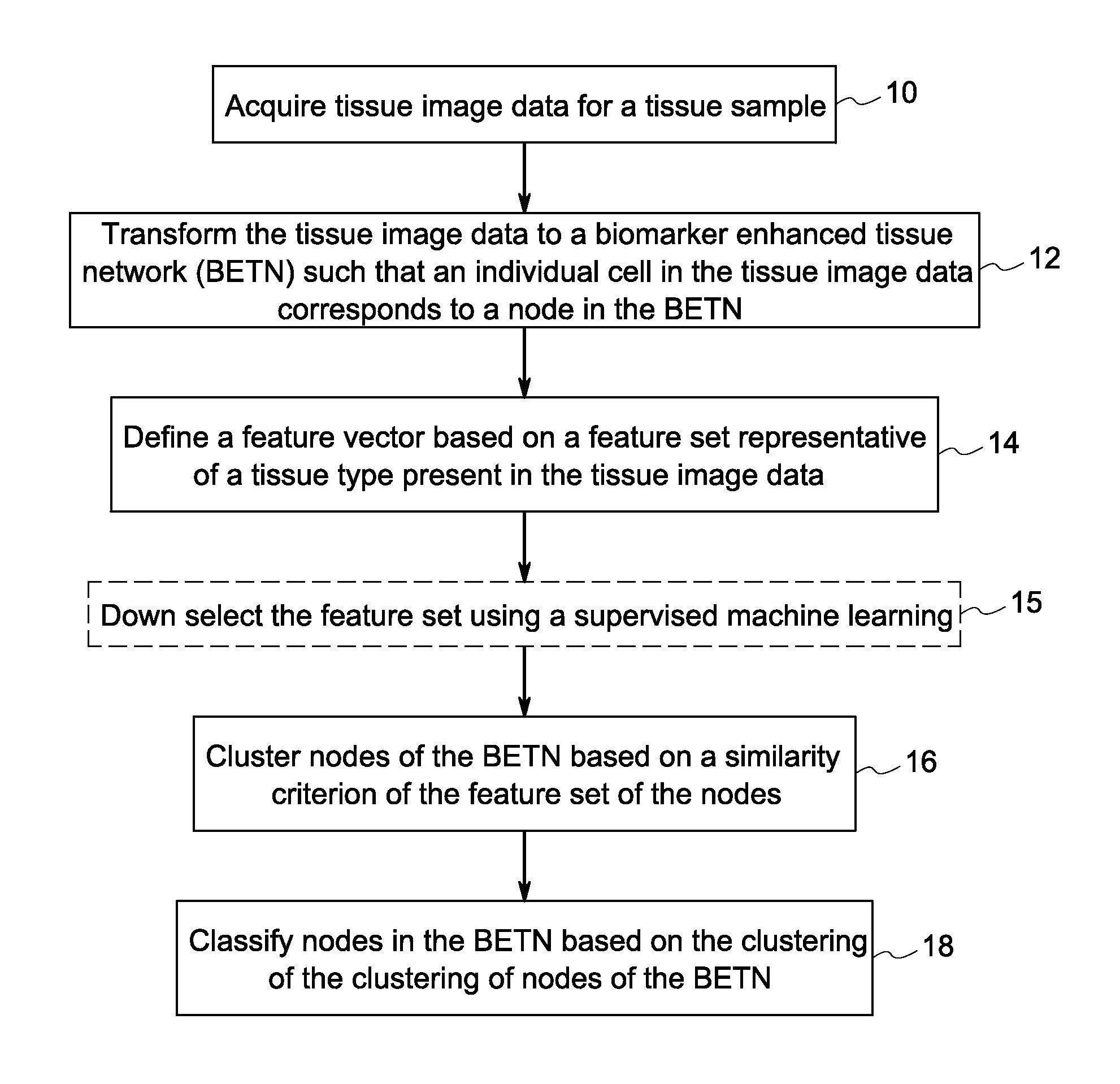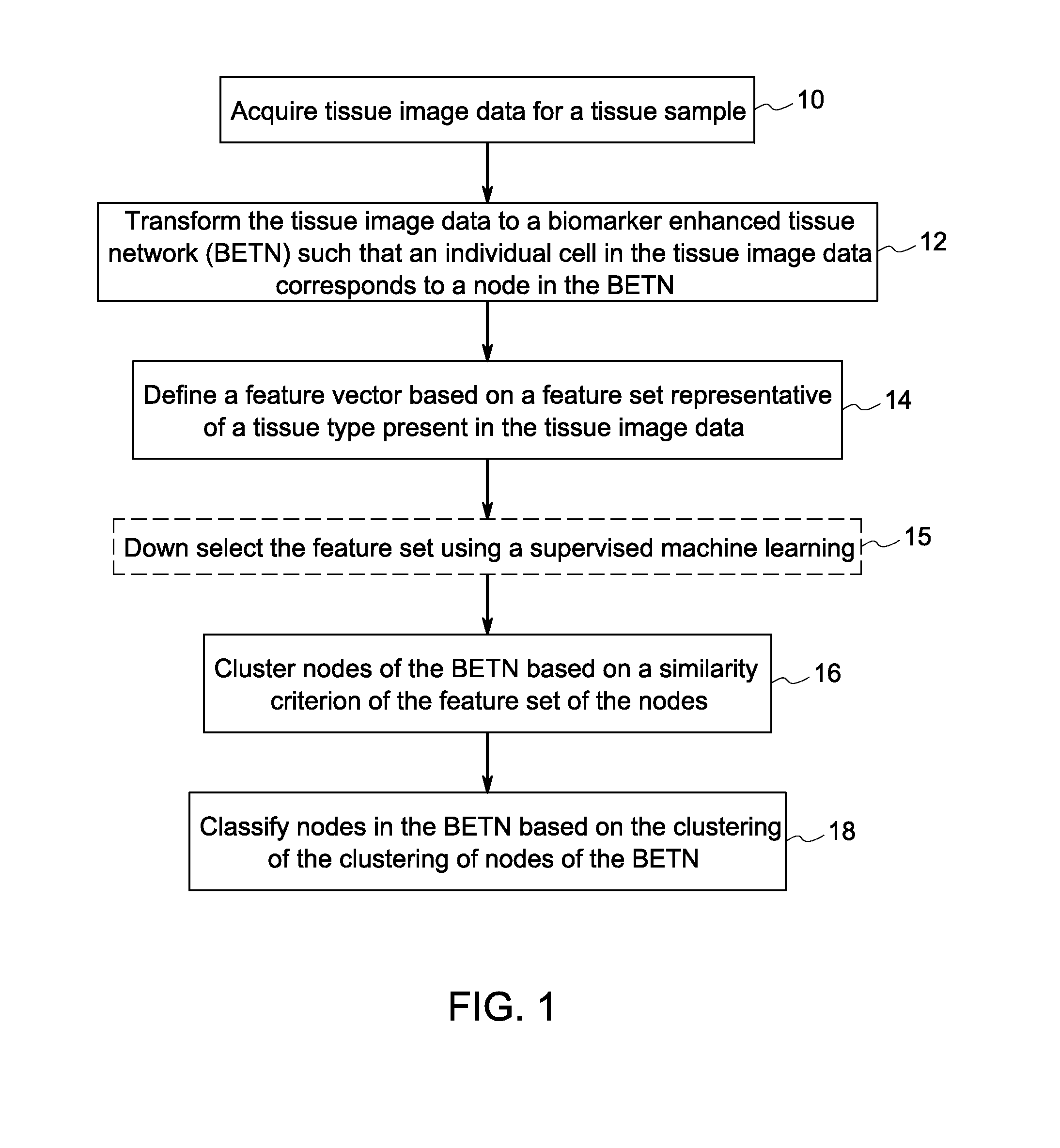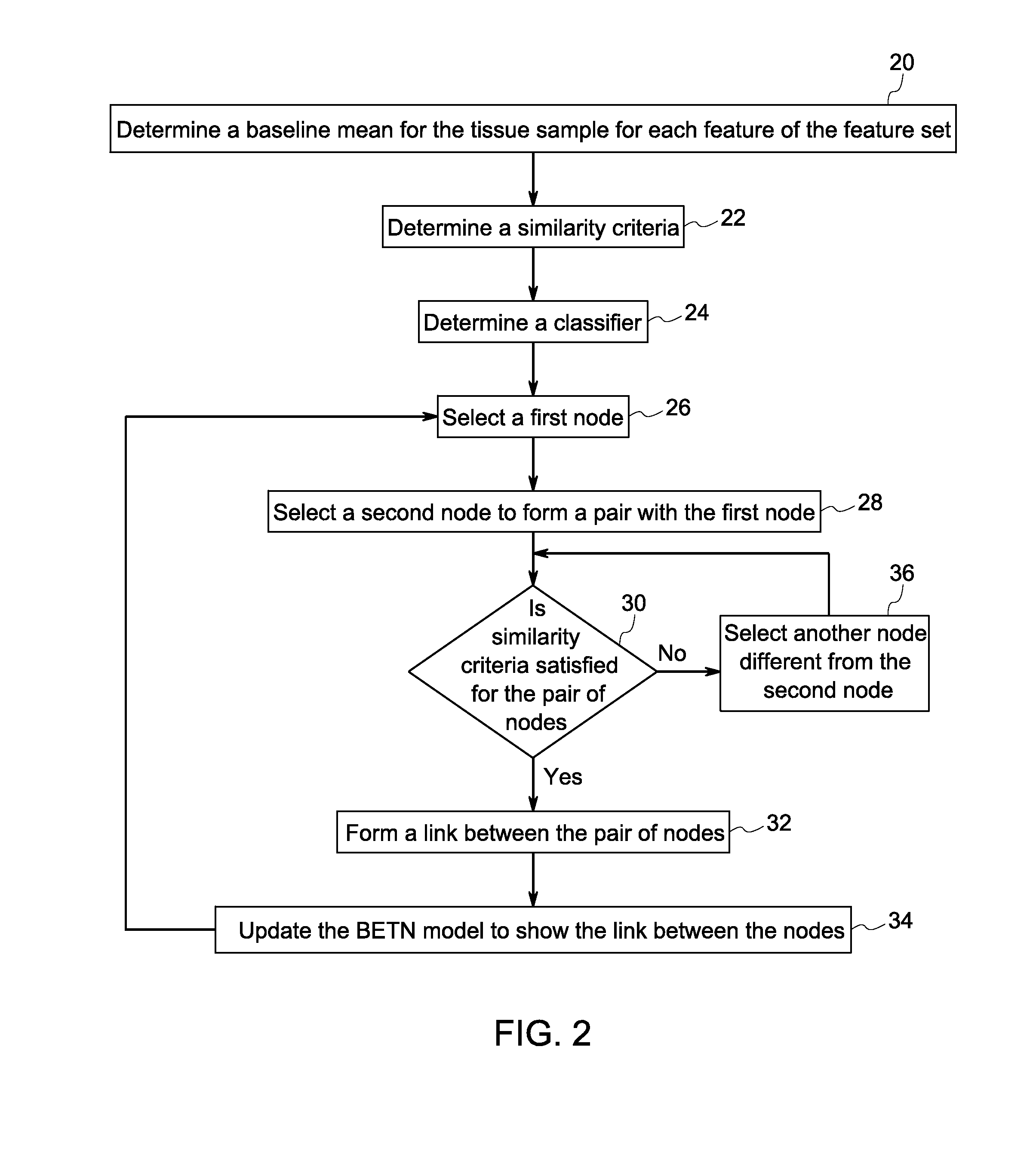Systems and methods for tissue classification using attributes of a biomarker enhanced tissue network (BETN)
a tissue network and tissue classification technology, applied in the field of tissue images, can solve the problems of low reproducibility, high inefficiency and user variability of methods, and manual methods that cannot utilize the complex information that can be gained
- Summary
- Abstract
- Description
- Claims
- Application Information
AI Technical Summary
Problems solved by technology
Method used
Image
Examples
example
[0087]An algorithm was performed for feature selection. Using the 18 features listed below, with the addition of preliminary clustering features as genes, chromosomes of features were mutated, crossed over, and then selected using an SVM as a fitness function. Mutation and crossover was performed by taking two parent chromosomes (paired at random), keeping their common genes, then selecting a gene from the first parent only with a 40% chance, from the second parent only, another 40% chance, and a 20% chance of a random gene mutation (neither parent). Also, there was a small chance of dropping any gene at random, including a common one, to prevent premature convergence. The child chromosome size would be within a range created by the difference of the two parents' sizes added or subtracted to the parent with the higher fitness. The results shows that the clustering at threshold 40 and area of the cell tied with the most appearance in the final round, with area of the nucleus, mean cy...
PUM
 Login to View More
Login to View More Abstract
Description
Claims
Application Information
 Login to View More
Login to View More - R&D
- Intellectual Property
- Life Sciences
- Materials
- Tech Scout
- Unparalleled Data Quality
- Higher Quality Content
- 60% Fewer Hallucinations
Browse by: Latest US Patents, China's latest patents, Technical Efficacy Thesaurus, Application Domain, Technology Topic, Popular Technical Reports.
© 2025 PatSnap. All rights reserved.Legal|Privacy policy|Modern Slavery Act Transparency Statement|Sitemap|About US| Contact US: help@patsnap.com



